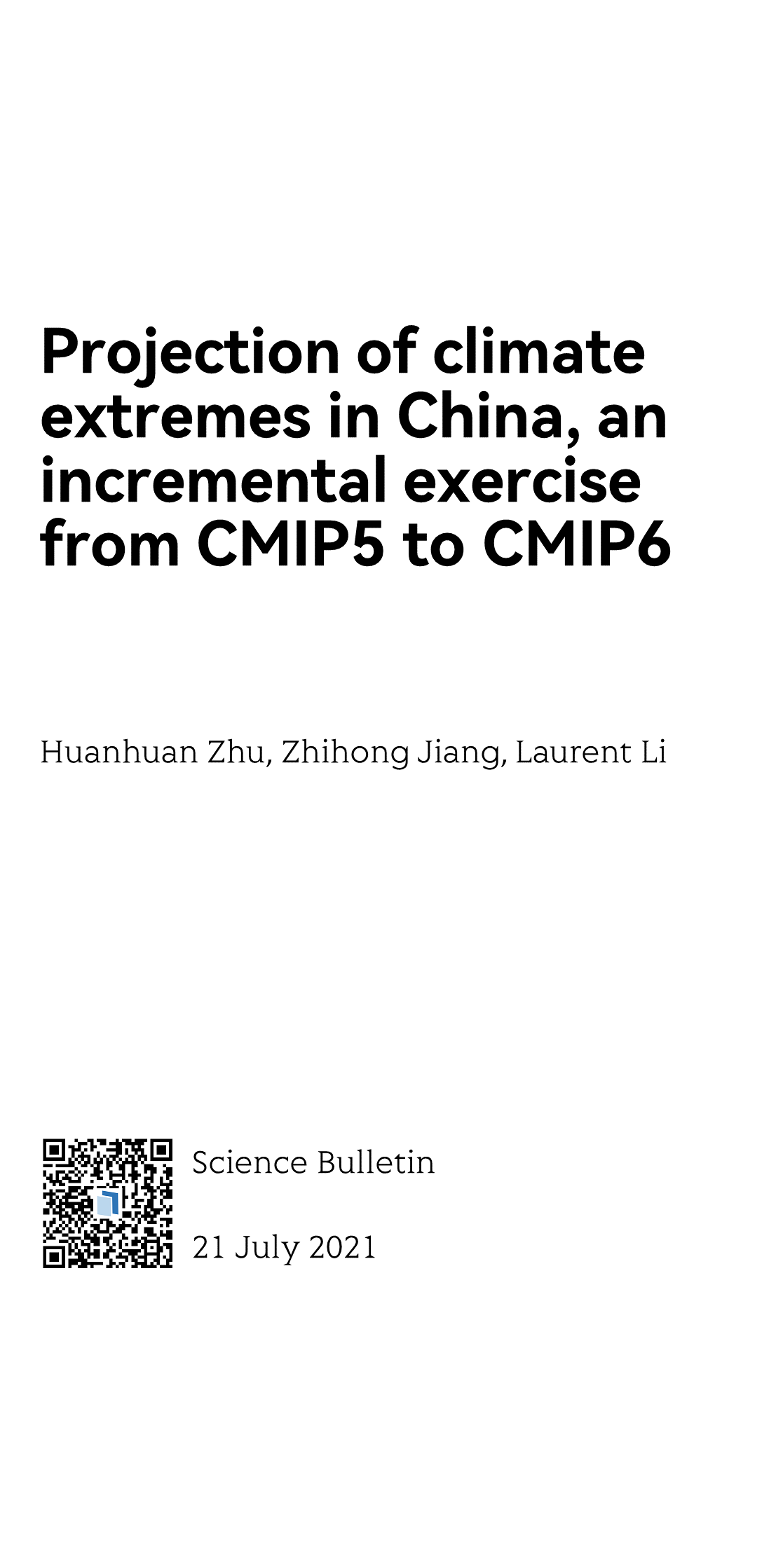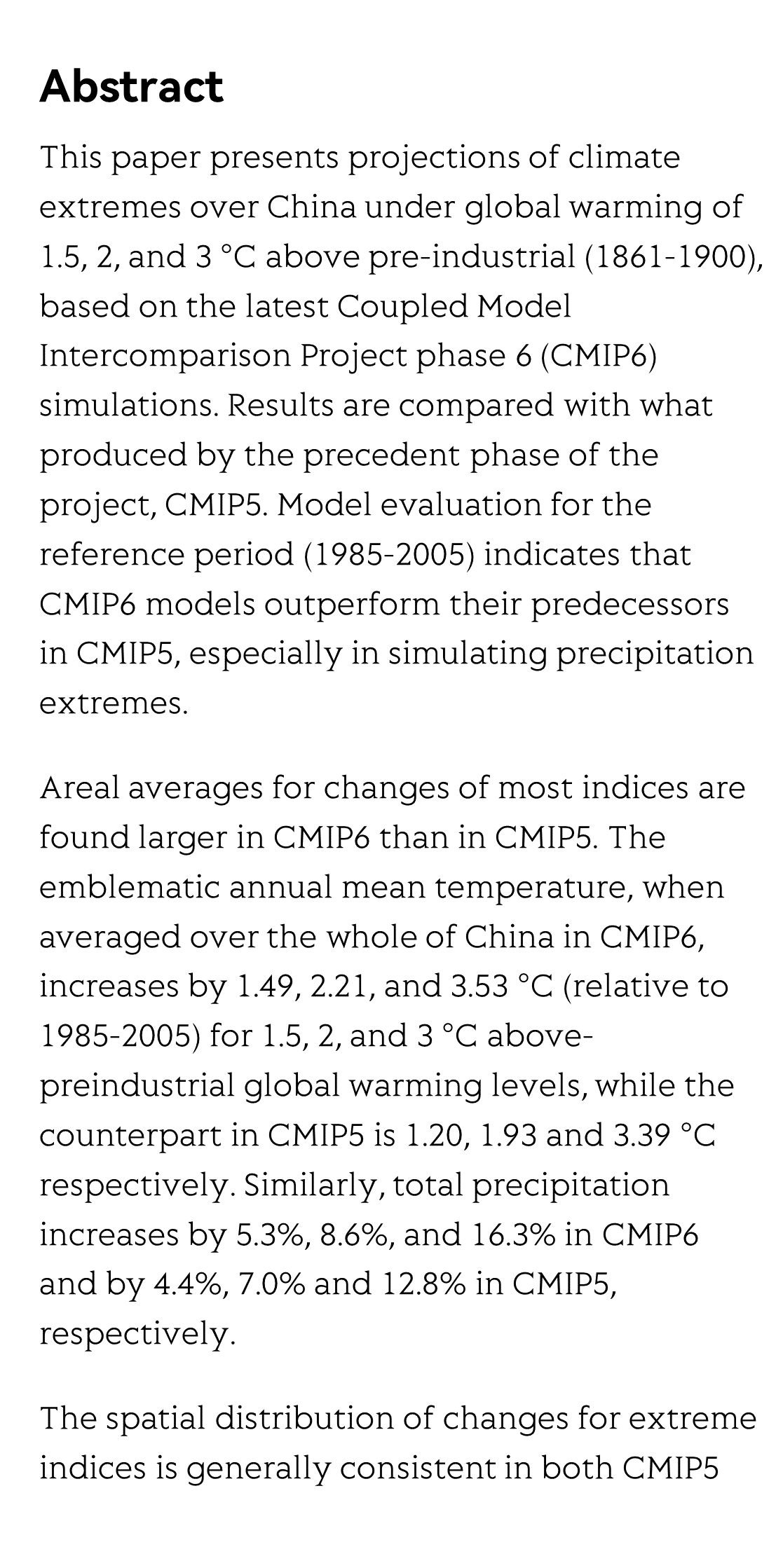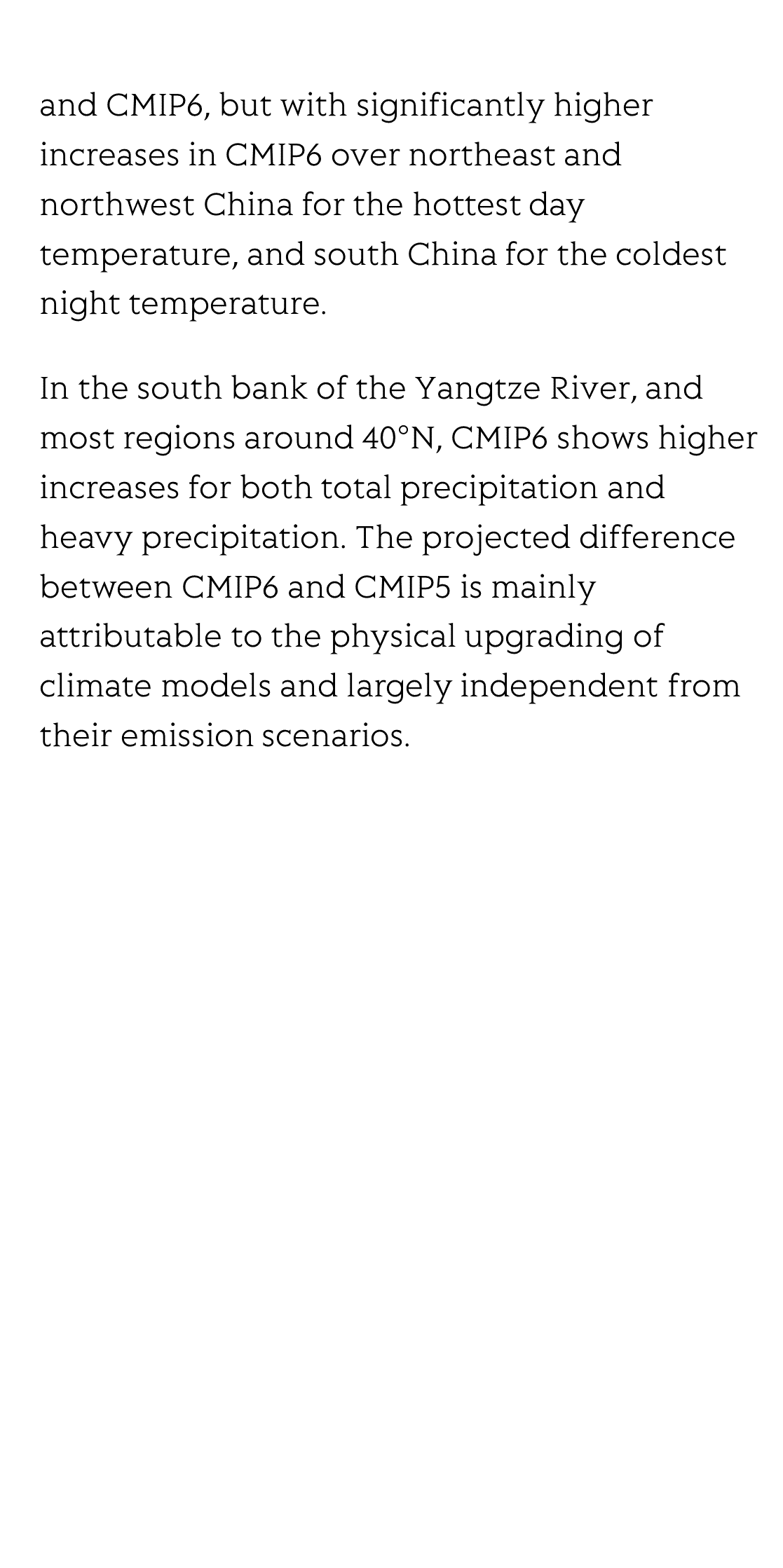(Peer-Reviewed) Projection of climate extremes in China, an incremental exercise from CMIP5 to CMIP6
Huanhuan Zhu 朱欢欢 ¹ ², Zhihong Jiang 江志红 ² ³, Laurent Li 李肇新 ⁴
¹ Joint International Research Laboratory of Climate and Environment Change, Nanjing University of Information Science and Technology, Nanjing 210044, China 南京信息工程大学 气候与环境变化国际合作联合实验室
² Collaborative Innovation Center on Forecast and Evaluation of Meteorological Disaster, Nanjing University of Information Science and Technology, Nanjing 210044, China 南京信息工程大学 气象灾害预报预警与评估协同创新中心
³ Key Laboratory of Meteorological Disaster of Ministry of Education, Nanjing University of Information Science and Technology, Nanjing 210044, China 南京信息工程大学 气象灾害教育部重点实验室
⁴ Laboratoire de Météorologie Dynamique, CNRS, Sorbonne Université, Ecole Normale Supérieure, Ecole Polytechnique, Paris 75005, France
Science Bulletin
, 2021-07-21
Abstract
This paper presents projections of climate extremes over China under global warming of 1.5, 2, and 3 °C above pre-industrial (1861-1900), based on the latest Coupled Model Intercomparison Project phase 6 (CMIP6) simulations. Results are compared with what produced by the precedent phase of the project, CMIP5. Model evaluation for the reference period (1985-2005) indicates that CMIP6 models outperform their predecessors in CMIP5, especially in simulating precipitation extremes.
Areal averages for changes of most indices are found larger in CMIP6 than in CMIP5. The emblematic annual mean temperature, when averaged over the whole of China in CMIP6, increases by 1.49, 2.21, and 3.53 °C (relative to 1985-2005) for 1.5, 2, and 3 °C above-preindustrial global warming levels, while the counterpart in CMIP5 is 1.20, 1.93 and 3.39 °C respectively. Similarly, total precipitation increases by 5.3%, 8.6%, and 16.3% in CMIP6 and by 4.4%, 7.0% and 12.8% in CMIP5, respectively.
The spatial distribution of changes for extreme indices is generally consistent in both CMIP5 and CMIP6, but with significantly higher increases in CMIP6 over northeast and northwest China for the hottest day temperature, and south China for the coldest night temperature.
In the south bank of the Yangtze River, and most regions around 40°N, CMIP6 shows higher increases for both total precipitation and heavy precipitation. The projected difference between CMIP6 and CMIP5 is mainly attributable to the physical upgrading of climate models and largely independent from their emission scenarios.
Review for wireless communication technology based on digital encoding metasurfaces
Haojie Zhan, Manna Gu, Ying Tian, Huizhen Feng, Mingmin Zhu, Haomiao Zhou, Yongxing Jin, Ying Tang, Chenxia Li, Bo Fang, Zhi Hong, Xufeng Jing, Le Wang
Opto-Electronic Advances
2025-07-17
Multiphoton intravital microscopy in small animals of long-term mitochondrial dynamics based on super‐resolution radial fluctuations
Saeed Bohlooli Darian, Jeongmin Oh, Bjorn Paulson, Minju Cho, Globinna Kim, Eunyoung Tak, Inki Kim, Chan-Gi Pack, Jung-Man Namgoong, In-Jeoung Baek, Jun Ki Kim
Opto-Electronic Advances
2025-07-17
Non-volatile tunable multispectral compatible infrared camouflage based on the infrared radiation characteristics of Rosaceae plants
Xin Li, Xinye Liao, Junxiang Zeng, Zao Yi, Xin He, Jiagui Wu, Huan Chen, Zhaojian Zhang, Yang Yu, Zhengfu Zhang, Sha Huang, Junbo Yang
Opto-Electronic Advances
2025-07-09
CW laser damage of ceramics induced by air filament
Chuan Guo, Kai Li, Zelin Liu, Yuyang Chen, Junyang Xu, Zhou Li, Wenda Cui, Changqing Song, Cong Wang, Xianshi Jia, Ji'an Duan, Kai Han
Opto-Electronic Advances
2025-06-27
Operando monitoring of state of health for lithium battery via fiber optic ultrasound imaging system
Chen Geng, Wang Anqi, Zhang Yi, Zhang Fujun, Xu Dongchen, Liu Yueqi, Zhang Zhi, Yan Zhijun, Li Zhen, Li Hao, Sun Qizhen
Opto-Electronic Science
2025-06-25
Observation of polaronic state assisted sub-bandgap saturable absorption
Li Zhou, Yiduo Wang, Jianlong Kang, Xin Li, Quan Long, Xianming Zhong, Zhihui Chen, Chuanjia Tong, Keqiang Chen, Zi-Lan Deng, Zhengwei Zhang, Chuan-Cun Shu, Yongbo Yuan, Xiang Ni, Si Xiao, Xiangping Li, Yingwei Wang, Jun He
Opto-Electronic Advances
2025-06-19







